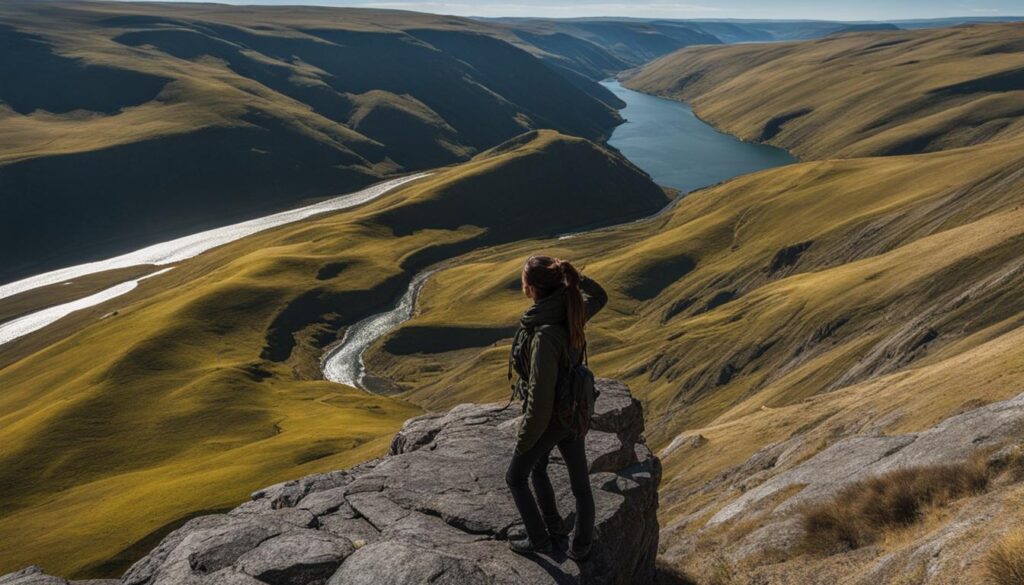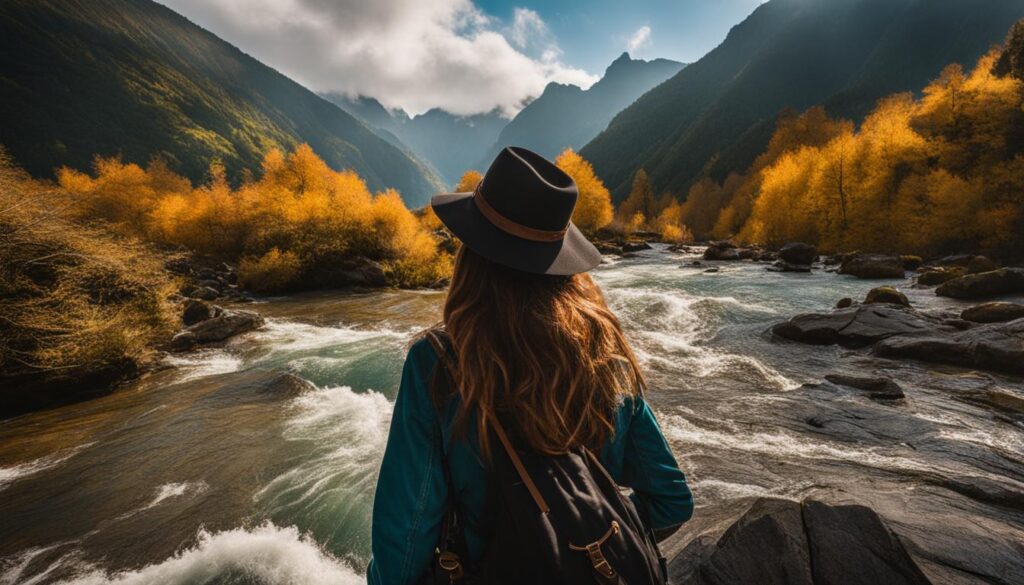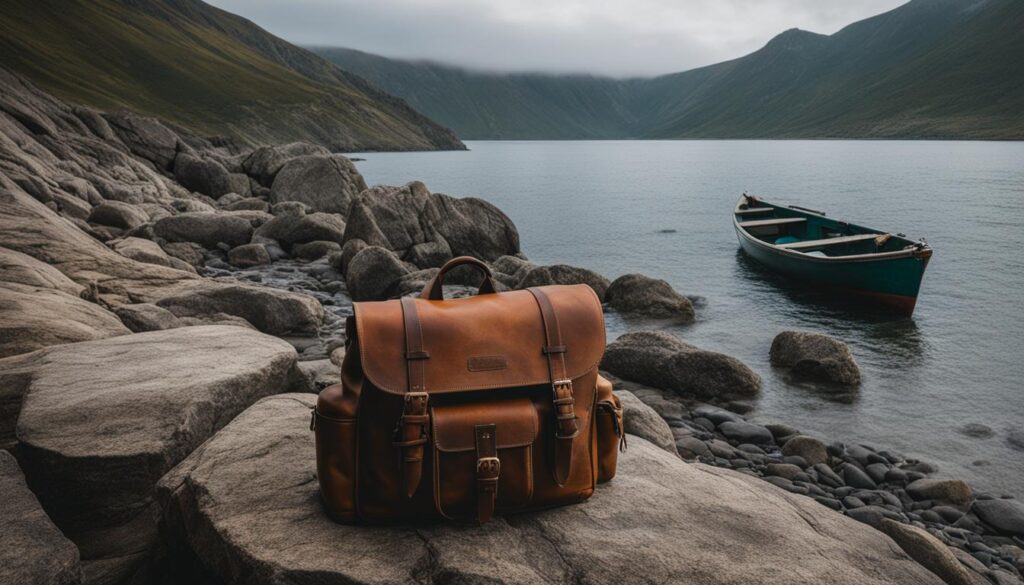Travel photography is all about capturing unique experiences, breathtaking landscapes, and vibrant cultures. However, capturing stunning imagery is only one part of the equation. To truly captivate your audience, you need to master the art of travel photography storytelling.
In this article, you’ll discover insider tips on how to create engaging narratives through your travel photography. From understanding the power of visual storytelling to incorporating people and location elements, we’ve got you covered. So buckle up and get ready to take your travel photography to the next level!
But before we dive deeper into travel photography storytelling, let’s take a closer look at what it means and why it’s so important.
Understanding the Power of Visual Storytelling in Travel Photography
Travel photography is more than just capturing stunning landscapes and iconic landmarks. It’s an opportunity to tell stories and convey emotions through imagery. Visual storytelling in travel photography has the power to transport viewers to a different world, evoke memories and emotions, and inspire them to explore the world.
Through visual storytelling, you can create compelling narratives that reflect the essence of the places you visit, the people you meet, and the experiences you encounter. Whether you’re capturing a majestic mountain range or a bustling street market, your images should communicate a story that connects with your audience.
Visual storytelling in travel photography involves more than just capturing a moment. It’s about capturing the essence of a place, the emotions of the people, and the overall experience. Your images should be a reflection of your journey and the stories you want to tell through them.
By understanding the power of visual storytelling, you can take your travel photography to the next level. With the right techniques and approach, your images can transcend beyond a simple snapshot, and become an immersive and captivating experience for your audience.
Techniques for Creating Engaging Narratives in Travel Photography
Travel photography is not just about capturing beautiful scenery or popular landmarks. It is also about creating engaging narratives that tell a story. Here are some practical techniques to help you add depth and meaning to your travel photography:
Composition Techniques
Composition plays a crucial role in creating compelling narratives in your travel photography. Consider using leading lines to draw your viewer’s eye towards a particular point of interest. Experiment with the rule of thirds to create balance and harmony in your images. Try using different angles and perspectives to provide a unique point of view. Remember to pay attention to the foreground, middle ground, and background to create depth and a sense of space in your photographs.
Lighting Techniques
Lighting is another essential element in creating engaging narratives in your travel photography. Learn how to use natural light to your advantage and experiment with your camera’s exposure settings to capture the mood and atmosphere of your location. Consider using artificial lighting to create dramatic effects or illuminate your subject in low-light situations.
Subject Selection
The subjects you choose for your travel photography can play a significant role in creating engaging narratives. Look for unique or unusual subjects that tell a story about your location. Consider incorporating people, animals, or objects that are specific to the culture or history of the place you are visiting. Remember that the best stories often come from the small, unexpected moments.
Post-Processing Techniques
Post-processing can help you enhance the storytelling aspect of your travel photography. Consider adjusting the color and contrast to create a specific mood or tone. Play around with shadow and highlight settings to add depth and dimension to your images. Remember that less is often more when it comes to post-processing, so don’t overdo it.
By incorporating these techniques into your travel photography, you can create images that are not only beautiful but also tell a compelling story. Remember to experiment and have fun with your photography, and always keep your narrative in mind.
Capturing Emotions in Travel Photography
Travel photography has the power to evoke emotions and create lasting memories. When capturing these moments, it’s essential to go beyond mere documentation and strive to create images that convey the emotions and experiences of the people and places you encounter. By doing so, you transport your viewer to the destination and allow them to experience it in a personal way. Here are some techniques for capturing emotions in your travel photography:
1. Observe and anticipate
Observation is key to capturing emotions in travel photography. Take time to watch your surroundings and anticipate the moments that could potentially evoke emotions. For instance, capturing the joy in a child’s face as they play or the sense of calm in a landscape scene during sunrise can transport the viewer to the moment they were captured.
2. Capture genuine expressions
Sometimes, the best way to capture genuine emotion is to snap candid moments. Unposed photographs can showcase people’s natural emotions and create a more authentic representation of the moment.
3. Use lighting to your advantage
Lighting plays a vital role in capturing emotions. For example, backlighting can create a sense of warmth and intimacy, while low light settings can emphasize the feelings of nostalgia and melancholy.
4. Experiment with depth of field
Playing around with depth of field can create a sense of intimacy or highlight the subject’s emotions. For instance, using a shallow depth of field can blur out the background and emphasize the subject’s facial expressions.
By focusing on capturing emotions in your travel photography, you can create a more immersive and engaging experience for your viewers. Take the time to observe, anticipate, and experiment with techniques like lighting and depth of field to create lasting memories.
Composition Tips for Storytelling in Travel Photography
Composition is an essential element in travel photography storytelling. It is the foundation on which you build your narrative. Effective composition can engage your audience and guide them through your images. Here are some composition tips that can enhance your travel photography.
Leading Lines
Leading lines are lines within your image that guide the viewer’s eye. They can be straight, curved or diagonal lines that draw the viewer’s attention to the focal point of the image. Leading lines can be found in various places, such as roads, paths, rivers, or buildings. Enhance your travel photography narrative by following lines that eventually lead into your main subject or theme.
Rule of Thirds
The rule of thirds is a fundamental principle of composition in photography. It involves dividing your image into thirds both horizontally and vertically, creating a 9-part grid. Then, placing your points of interest where the lines intersect. By positioning key elements of your photograph on or close to these intersections, your image becomes more dynamic and visually appealing, making your audience more engaged with your storytelling.
Depth
Depth can be created in photography by including elements in the foreground, middle-ground, and background. This adds a sense of dimension to your image, making your audience feel as if they are there with you. You can use elements like trees, rocks, buildings, or people to achieve depth and create a more profound visual experience of your travel story.
Perspective
Perspective refers to the angle from which an image is captured. It is a useful tool for conveying your view of the world to your audience. Experimenting with different angles can result in unique and engaging compositions, enabling your audience to see the world through your eyes. Fly the audience over a landscape, capture from high above, or crouch down to the level of a small animal to tell a more engaging story.
Incorporating these composition tips into your travel photography narratives will elevate your storytelling and create more visually compelling images. Remember, adding visual interest to your images will help captivate your audience and inspire them to explore more of the world.
Incorporating Elements of the Location in Travel Photography Narratives
Travel photography is all about telling a story through your images. To make your travel photography stand out, it’s essential to incorporate elements of the location into your narratives. This not only adds context to your photos, but it also helps create a deeper connection with your viewers.
So how can you incorporate elements of the location into your travel photography? First, focus on capturing the local culture. This can be done through photos of street art, local festivals, or even daily life in the city. These images can bring a unique perspective to your travel photography and add depth to your narratives.
Next, consider incorporating the local architecture into your photos. Capturing iconic buildings or unique structures can help tell the story of a specific location and provide a sense of place in your images.
Capturing Landscapes
No travel photography story is complete without capturing the landscapes of the locations. Be it the majestic mountains, the endless deserts, or the vast ocean, and landscapes can provide the perfect backdrop for your narrative.
“Landscapes are one of the best ways to add context and depth to your travel photography. Try capturing photos during golden hour or when the weather is dramatic to add extra impact.” – Jane Smith, professional travel photographer
Finally, don’t forget to capture the unique elements that make a location special. This could be anything from the delicious local cuisine to the vibrant street art. These details can help add color and personality to your travel photography and make your narratives more engaging.
By incorporating elements of the location in your travel photography, you can create more engaging and impactful narratives. So grab your camera and start exploring!
Storytelling with Light and Shadow in Travel Photography
As a travel photographer, you must know how to use light and shadow creatively to enhance your narrative. Light and shadow can create depth, mood, and drama in your images. When shooting in natural light, consider the time of day, weather conditions, and direction of light to frame your shot. During golden hour, the light is soft and warm, casting long shadows and saturating colors. While at midday, the light is harsh and bright, creating deep shadows and high contrast.
If you’re in a dimly lit location, use artificial light sources like lamps, candles, and LED lights to create an intimate and moody atmosphere. You can also use shadows to create a sense of intrigue and emphasize certain details in your composition. Experiment with backlighting, sidelighting, and front lighting to see how they affect your narrative. Don’t be afraid to play with the shadows and silhouettes that your subject can cast.
Remember that subtly is key when it comes to storytelling with light and shadow. Use it to enhance the viewer’s emotional response and guide them through your narrative.
| Tip | Description |
|---|---|
| Use low light. | If you are shooting at night or indoors, experiment with “low light” settings on your camera to capture ambiance and generate mood through color and shadow. |
| Use shadows to tell a story. | Think about where your light source is coming from and how it affects your subjects. Shadows can add depth, mystery, and emotion to your shots. |
| Notice the time of day. | Pay attention to the direction, color, saturation, and intensity of light throughout the day. The right time of day can make or break your images. |
Incorporating People in Travel Photography Stories
When it comes to travel photography storytelling, capturing the essence of a place through the people who call it home can add a layer of depth and human connection to your narratives. Whether it’s candid moments of locals going about their daily lives or intimate portraits of individuals, incorporating people into your travel photography can help you tell more engaging stories.
One effective strategy for capturing people in your travel photography is to observe and wait for natural moments to occur. Instead of staging shots, try to be patient and attentive to your surroundings. By doing so, you can capture authentic emotions, interactions, and experiences that embody the spirit of the place you’re photographing. Also, asking for permission before taking someone’s photo might lead to more relaxed subjects who exhibit candid expressions or sharing a cultural quirk or two, strengthening the connection between you and the local community.
Another idea is to focus on capturing the unique features of the people you encounter. This could be their traditional clothing or accessories, interesting facial expressions, or even the wrinkles on their faces. By focusing on these specific details, you can convey more profound stories that showcase the individuality of the person and the cultural context. Also, research on customs and dress code and adapting to the cultures you are visiting, to help you blend more effectively, and add depth to your stories.
Remember, the goal is to tell a story through your photography. Incorporating people and their stories is an essential aspect of travel photography storytelling. With practice, patience, and creativity, you can capture the emotions and experiences that make your travel photography narratives more engaging and captivating.
Capturing Details and Close-ups in Travel Photography Storytelling
When it comes to travel photography storytelling, capturing details and close-ups can add depth and layers to your narrative. Focusing on small elements can reveal larger stories and create a more immersive experience for your viewers. Here are some travel photography techniques and ideas to capture compelling details:
- Look for unique textures, patterns, and colors that can enhance your images.
- Try playing with shallow depth of field to create focus on a particular detail while keeping the rest of the image blurred.
- Consider photographing small objects or souvenirs that represent the location and culture.
- Include people’s hands or details of their clothing to add personality and character to your shots.
For example, in the image below, the intricate details of the traditional Thai dance costume and the dancer’s accessories create a more engaging and captivating narrative. The intricate golden accents and vibrant colors showcase the local culture, while the tight crop on the details of the dancer’s outfit highlights the dedication and passion for the art form.
Don’t be afraid to experiment and play around with close-ups and details in your travel photography. These travel photography techniques can add a unique and personal touch to your narratives, and help your viewers connect more deeply with your images.
Editing and Post-Processing Techniques for Enhancing Travel Photography Stories
Once you’ve captured your travel photos, the real work begins: editing and post-processing. This is where you can enhance the storytelling aspect of your images and bring out the details and colors that make them truly striking. Here are some travel photography techniques and ideas for editing and post-processing:
Color Grading
One of the most effective ways to add mood and depth to your photos is through color grading. Experiment with hue, saturation, and color balance to achieve the desired effect. Adjusting the hues of specific color ranges can also add interest and character to your images.
Adjusting Exposure
Exposure is a vital aspect of any photograph. Knowing how to adjust exposure can help you highlight the details in the highlights and shadows of your images. Don’t be afraid to make bold adjustments to create a dramatic look.
Adding Filters
Filters can add unique character and atmosphere to your photos. Experiment with contrast, black and white, sepia, and other filters to give your images a unique look and feel. It is essential to use them in moderation to avoid overdoing it.
Removing Distractions and Refining Details
Editing is also an opportunity to remove unwanted distractions from your photos. Crop your image to focus on key features and remove any unwanted elements. Use the clone stamp to remove blemishes and improve the details in your images.
Remember, post-processing should always serve the narrative conveyed through your images. Avoid over-processing your photos to maintain the authenticity of your travel photography.
Showcasing Your Travel Photography Stories
Now that you have mastered the art of travel photography storytelling, it’s time to showcase your work to the world. Here are some ideas to consider:
Utilize Social Media Platforms
Social media platforms such as Instagram, Facebook, and Twitter can help you reach a wider audience. Post your images accompanied by interesting captions that tell the story behind the photo. Use relevant hashtags to increase visibility and engage with your followers to build a community around your work.
Create Photo Essays or Books
If you are looking for a more long-form and immersive way to showcase your travel photography stories, consider creating a photo essay or book. Compile your best images and pair them with written narratives that provide context and insight into each photo.
Collaborate with Travel Publications
Collaborating with travel publications can help you gain exposure and credibility as a travel photographer. Pitch your story and images to travel magazines or blogs to reach a wider audience and potentially earn income from your work.
With these tips, you can effectively showcase your travel photography stories and captivate your audience with your stunning images and compelling narratives.
Conclusion
Congratulations, you have now learned the essential tips and techniques for creating compelling narratives through your travel photography. Remember, storytelling is a powerful tool in photography and can elevate your images from just a mere depiction of a place to a captivating story that evokes emotions and connects with your audience.
By understanding the power of visual storytelling and incorporating techniques such as composition, capturing emotions, and utilizing light and shadow, you can create impactful narratives that transport your audience to the location and immerse them in the story.
Don’t forget to showcase your travel photography stories to a wider audience through social media, photo essays, or collaborating with travel publications. With practice and creativity, you can continue to develop and refine your storytelling skills, and capture the beauty and essence of your travels through your images. Happy shooting!















































